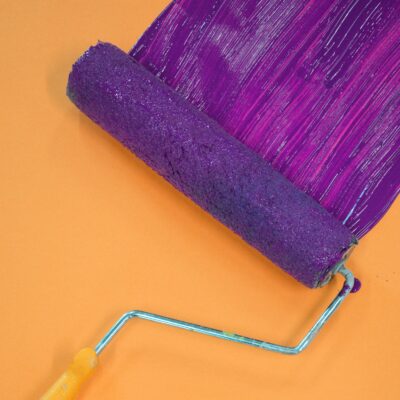House painting

House painting
Giving your house a fresh coat of paint can completely transform its look and feel. Whether you’re painting the interior or exterior, it’s important to choose the right type of paint, color, and finish to achieve the desired result. In this article, we’ll explore the different aspects of house painting, including interior and exterior painting, trim painting, and the cost of painting per room.
Interior Painting
Interior painting is a great way to refresh and revitalize your living spaces. If you’re planning to paint the interior of your house, consider the following factors before starting the project:
- Paint type and color: Choose a paint type and color that complements your home’s architecture, decor, and lighting. You can opt for flat, eggshell, satin, or semi-gloss finishes depending on the room’s function and traffic. Neutral colors like beige, gray, and white are popular choices for living rooms, bedrooms, and kitchens. You can also add an accent wall with a bold color or wallpaper to create a focal point.
- Preparation and priming: Proper preparation of the walls and surfaces is crucial for a smooth and long-lasting paint job. Remove any wallpaper, loose paint, dirt, or debris from the walls using a scraper, sandpaper, or a power washer. Fill any cracks, holes, or gaps with spackle or caulk and let it dry completely. Use a quality primer to seal and prime the walls before applying the paint.
- Tools and techniques: The right tools and techniques can make a big difference in the quality of the paint job. Invest in high-quality brushes, rollers, painter’s tape, and drop cloths to protect your floors and furniture. Use a brush to cut in around the edges and corners and a roller to paint the larger surfaces. Apply the paint in thin and even coats, and let it dry completely before applying the next coat.
Exterior Painting
Exterior painting is not only a cosmetic upgrade but also a protective measure against the elements. If you’re planning to paint the exterior of your house, consider the following factors before starting the project:
- Paint type and color: Choose a paint type and color that can withstand the weather conditions in your area. You can opt for oil-based or latex-based paints depending on the surface’s material and condition. Neutral colors like white, beige, and gray are popular choices for the exterior, as they reflect the sunlight and reduce the heat buildup. You can also add a pop of color to the front door or shutters to enhance the curb appeal.
- Preparation and priming: Proper preparation of the walls, roof, and trim is essential for a durable and attractive paint job. Remove any dirt, dust, mildew, or chalking from the surfaces using a pressure washer or a scrub brush. Repair any damaged or rotting wood, stucco, or siding using wood filler, epoxy, or cement. Apply a high-quality primer to seal and prime the surfaces before applying the paint.
- Tools and techniques: The right tools and techniques can make the exterior painting job easier and safer. Invest in a sturdy ladder, scaffolding, or a cherry picker to reach the high areas of your house. Use a brush to paint the corners, edges, and trim, and a roller or a sprayer to paint the larger surfaces. Apply the paint in thin layers, and avoid painting in direct sunlight or during windy or rainy weather.
House painting trim
Trim painting is a finishing touch that can elevate the look of your interior or exterior spaces. If you’re planning to paint the trim of your house, consider the following factors before starting the project:
- Paint type and color: Choose a paint type and color that complements the wall color and style of your house. You can opt for a gloss or semi-gloss finish to highlight the trim’s details and contrast with the wall color. White or off-white colors are classic choices for the trim, but you can also match it to the wall color or choose a contrasting color for a modern look.
- Preparation and priming: Proper preparation of the trim is crucial for a smooth and durable paint job. Remove any dirt, dust, or old paint from the trim using a scraper, sandpaper, or a chemical stripper. Repair any cracks, gaps, or nail holes using wood filler or caulk and let it dry completely. Apply a primer to the trim to seal and prime it before applying the paint.
- Tools and techniques: The right tools and techniques can also make the trim painting job precise and efficient. Use a brush or a small roller to paint the trim, and a painter’s tape to protect the adjacent surfaces. Apply the paint in thin and even coats, and let it dry completely before applying the next coat. Use a small brush to touch up any missed spots or drips.
Painting Cost per Room
The cost of painting per room can vary depending on several factors, such as the size, condition, and complexity of the room, also the type of paint and finish, and the labor and material costs. However, here are some average estimates of the painting cost per room for a professional paint job:
- Bedroom: 350-800
- Living room: 400-900
- Kitchen: 200-1000
- Bathroom: 200-600
- Hallway: 200-500
These estimates include the cost of labor, materials, and equipment, but may not include the cost of wall repairs, furniture moving, or extra services such as color consultation or trim painting. To get a more accurate estimate of the painting cost per room, it’s best to get a quote from a professional painter or contractor.
Conclusion
House painting is an art that requires attention to detail, patience, and skill. Whether you’re painting the interior or exterior, the trim or the whole room, it’s important to choose the right type of paint, color, and finish to achieve your desired result. By following the tips and guidelines in this article, you can transform your house into a beautiful and welcoming home that reflects your style and personality. Happy painting!
